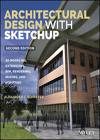The volatility of our financial markets blazed into view in October, as if someone had struck a match. While the immediate reaction of architects has been as hot-faced witnesses to a conflagration (we do not control the hedge funds or the investment banks), we recognize the effects of the fire sale, particularly for our clients. It goes without saying that getting the job remains the defining business challenge we all face.

In case you find yourself in meltdown, realize this: Clients need architects now more than ever. At a critical time, good design and superior physical facilities can give companies or institutions a vital, competitive edge—with their peers, with their customers, with their employees, with the communities that they serve. We architects can dare to say, “Trust me,” because we speak with authority.
Our data can help you. For 11 years, the Business Week/Architectural Record design awards program has documented how architectural (and interior and industrial) design affects business. Examine this year’s winners, which include building projects that made existing companies better places. Each of their stories has a lesson that is measurable.
At Elmpark, in Dublin, Ireland, the shared vision of architect and client produced a more sustainable workplace, complete with obligatory green roof and lighting scheme, in which the developer could ultimately
sell power to his tenants. For Haworth in Michigan, a striking new building addition encouraged a 300 percent rise in customer visits, with a concurrent rise in sales. And in a third, at Alley 24 in Seattle, employees report extreme satisfaction, so much that actual sick days have decreased.
Whether reflected in worker satisfaction or productivity, design for business and institutional clients means more than signature buildings by glamorous architects. As an architect, you can help determine which materials and systems can make the most difference, whether to attract bigger crowds or to save energy. Perhaps you can help consolidate facilities from far-flung sites to a central building that will foster better communication among employees.
In good times and hard times, in addition to the inspiration that our work provides, clients respond to hard facts, suggesting that we present our architectural projects as solutions to their needs, ferreting out measurable data (what the industry loves to call “metrics”) that signify how actual designs made a difference. The burden may sound daunting, but look for information to back up your assertions.
Architects and clients recognize that the way we work has fundamentally changed, with a new workforce that increasingly functions off-site, that requires flexibility in the workplace for its changing social norms, for digital transformation, even for (shudder) “downsizing.” We have found that good design literally enhances real estate value, at a time that real estate values have risen to the forefront of business consciousness. And design becomes a recruiting tool for all employees, particularly for the young.
Beyond all the hype about branding and marketing, we recognize that the world remains interested in architecture and design, even in a downturn. A well-conceived, well-executed project can help propel a company into a successful 21st-century business, by saving operating costs, attracting and retaining talent, or by building equity for the future, at a time that equity seems to be sliding downhill.
If you need further examples, turn the pages of this issue to the BusinessWeek/Architectural Record Awards winners or seek out our new publication for clients, HQ. Ironically, a difficult marketplace may be the best time to press the case for the power of design. Architects will need help in convincing clients to retain their services in the coming weeks; clients will need help, period; and our publications stand ready to make the case for both.
If you wish to write to our editor-in-chief you can email him rivy@mcgraw-hill.com.


